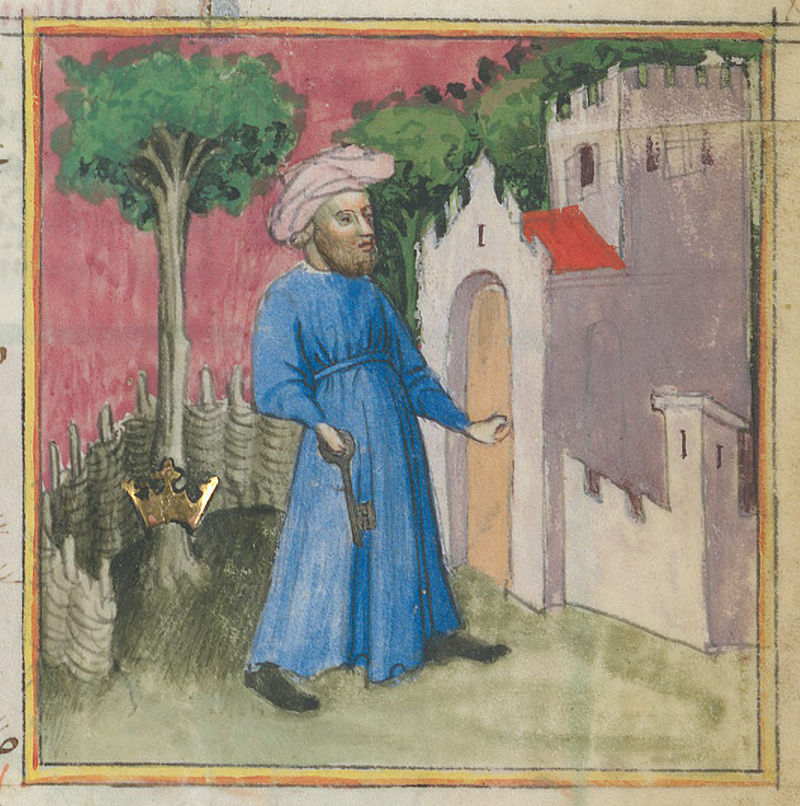
“Senior Zadith [Ibn Umayl] carries the Key that opens The Treasure House of Wisdom.”
The Nestorians
In the fifth century a Christian sect called the Nestorians, who followed Nestorius, a Patriarch of Constantinople, were declared heretical and broke with the established church. This sect migrated to Persia with Greek manuscripts and translated Greek texts to Syriac Aramaic, monopolizing medicine and incidentally bringing alchemical literature to Persia. This knowledge would be added to the works the Arabs would find in Alexandria, Egypt, and the Golden Age dawned over the Islamic world.
Islamic Empire
In the seventh century, Mohammed (570 – 632 CE), the founder of Islam, united several Arab tribes under a single religious military force. The Islamic empire and its great army arose in Arabia within a century and spread outward to conquer vast areas of the Near East, Central Asia and Africa. In Egypt and Persia the Muslim conquerors found new knowledge in the form of philosophy and alchemy.
When the Arabs took Alexandria, Egypt, they were exposed to the vast knowledge and philosophies of Egypt and Greece and among that, the alchemy of ancient Alexandria. They began to admire such names as Democritus, Mary the Jewess, Agathadaemon, Zosimos and Hermes. The word “alchemy,” itself, was derived from Muslim sources when the Islamic empire spread over Egypt to Morocco and Spain in the eighth century.
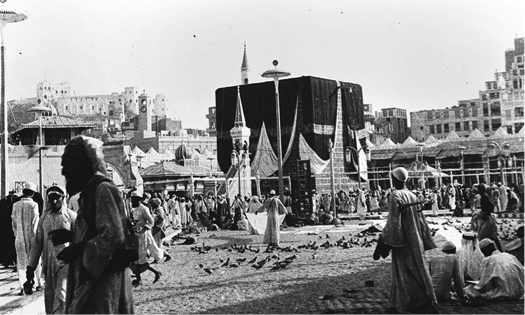
Arab alchemists wrote of the philosopher’s stone and of the elixir of life as potable gold, ideas probably learned from the Chinese. The Arabs were familiar with sulfuric acid, known as oil of vitriol; and nitric acid, also known as aqua fortis and spirit of niter. They also knew of hydrochloric acid, known by Latin alchemists as acidum salis, muriatic acid, and spirits of salt. Arab alchemists discovered that a mixture of nitric acid and hydrochloric acid, what in Latin would be called aqua regia, could dissolve gold.
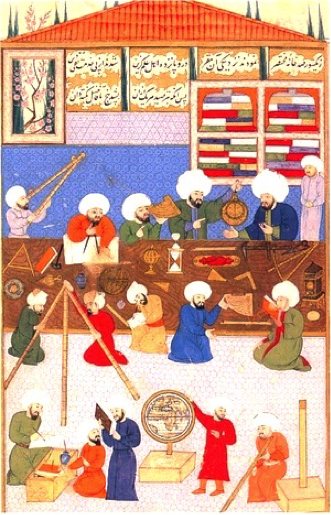
“Dissolution” From the Elixir of the Seven Seals (Royal Art Society)
“Dissolution means to dissolve the gross elements of the alchemist, the microcosm, in the cosmos or macrocosm. In Chemistry, dissolution is the operation whereby a solid, liquid or gas forms a solution in a solvent. In alchemy Dissolution refers to the natural corrosive power of water on metal that produces rust and the oil of vitriol.
“It is the process of breaking down the WHITE ASH or WHITE TINCTURE, which is now symbolized as the SALT iron sulfate (green vitriol), with WATER, to produce red iron oxide (RUST) and sulfuric acid (OIL OF VITRIOL or CINNABAR). The latter two symbolize the gross elements and spirit respectively. The alchemical symbolic operation of Dissolution occurs at the human center of balance, the lower elixir field. Here, the alchemist meditates on liquid: water, rust and cinnabar or the oil of vitriol.
“At this stage in the visualization the alchemist divides the white tincture, symbolizing the isolated but united five elements, into two parts. The alchemist pours the white tincture that remains from the Calcination process into a vessel of WATER, usually a beaker, until the tincture is totally immersed in WATER. Beginning as a slow drip, the microcosm as drops of WHITE ASH or WHITE TINCTURE becomes a stream, until finally the whole tincture is immersed in WATER. Then as a SALT, the GREEN VITRIOL, the microcosm immersed in WATER breaks down into RUST and the RED TINCTURE, the OIL OF VITRIOL or CINNABAR.
“The RED TINCTURE or symbolic SULFURIC ACID, in turn, causes the dissolution of all the traditional metals except the noble GOLD or SPIRIT. In inner alchemy Dissolution means to dissolve the gross elements of the microcosm, leaving only the pure consciousness, the observer. The four material elements dissolve and separate from the ‘SPIRIT,’ or pure ‘no-mind’ awareness.”
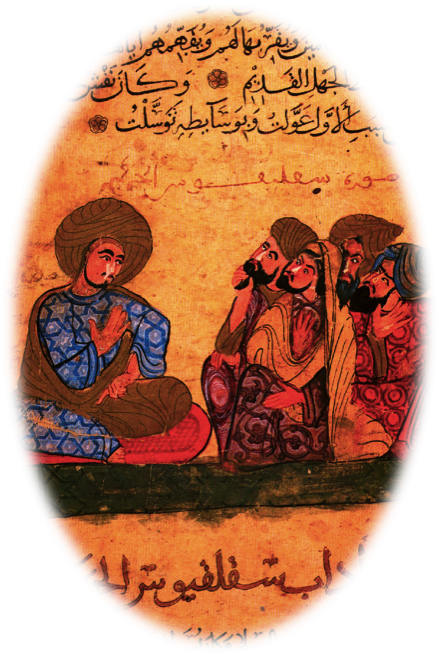
The First Arab Alchemists
The first Arab alchemist may have been Khalid ibn Yazid (d. 704), brother of a caliph, and the historical inspiration of the legend of Prince Calid. In 1144 Robert of Chester became the first to translate an Arabic alchemical treatise to Latin, the Liber de compositione alchimiae, an epistle from the Greek Byzantine monk Marianos to his student Khalid. Khalid is named as author of several alchemical works.
The Persian chemist and physician Jabir ibn Hayyan (721 – 815), or as he was later known in Europe, Geber, is the earliest known purely operative alchemist in the West. Geber was the son of a pharmacist of unknown ethnicity. He was familiar with the practical equipment of a chemical laboratory and he promoted experimentation. He is said to have discovered hydrochloric acid, mercuric oxide, mercuric chloride (used to disinfect wounds) and silver nitrate.
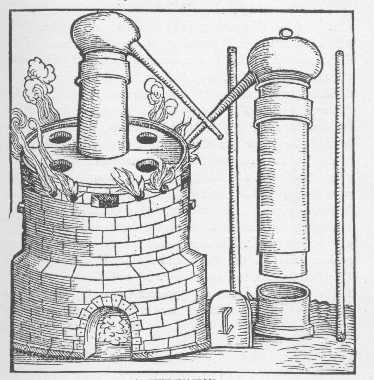
Geber based his cosmology on the four Aristotelian elements and the four classical qualities of hot, dry, cold and moist. Fire was hot and dry; water was cold and moist; air was hot and moist; and earth was dry and cold. Geber added two other elements, sulfur and mercury. He proposed that all metals were naturally formed in the interior of the Earth as mixtures of ‘sulfur’ (fire; the hot and dry qualities in metal) and ‘mercury’ (water; the cold and moist qualities of metal) in various proportions.
Geber postulated that when the proportions of sulfur and mercury in one metal were manipulated by the craft of the alchemist, the metal was transformed into another metal. This idea would lead to the meme of the chemical wedding. In theory, when particles were crushed to a smaller size and densely packed they became noble metals, so the alchemist used the process of sublimation, a kind of distillation, to condense the vapors into a solid, applying pressure on the base metal, especially mercury, to make it more compact, or “fixed.”
Mercurial elixirs or the Philosopher’s Stone were vital to the transmutation of base metals to noble metals. Naturally, the search for formulae to transmute base metals like lead or iron into noble metals, especially silver and gold, was pursued as an industrious endeavor; first by schools in the Near East, starting with Geber’s, and later, through them, by scholars in Europe.
Dhul-Nun
The Nubian mystic, poet and alchemist Ibrāhīm al-Miṣrī, who became known by the honorific Dhūl-Nūn Abū l-Fayḍ Thawbān, or Dhūl-Nūn al-Miṣrī (died c. 860 CE), was an Egyptian Muslim revered as a Sufi saint in Sunni Islam. Of the three paths of Sufism, love, fear and knowledge, Dhul-Nun was devoted most to gnosis as the way to illumination. His written works do not survive but his wisdom was passed along in oral tradition.
Dhul-Nun’s life and teachings were explored in his biography, The Brilliant Star: On the Spiritual Virtues of Dhu-l-Nūn the Egyptian, by the Arab Andalusian (Spanish) Sunni mystic and saint Ibn ‘Arabī (1165 – 1240), who is traditionally known in Sufism as “the greatest master.”
Ibn ‘Arabī claimed to have seen Allah (the Muslim god, a version of the Hebrew Yaweh) in a dream of the Day of Judgment, wherein Allah instructed him to council people. In a vision of the three Abrahamic prophets, Moses, Jesus and Muhammad, Jesus told Ibn ‘Arabī to become an ascetic and practice detachment. Ibn ‘Arabī gave away his possessions, prayed at night and meditated in seclusion and silence.
Dhul-Nun was a wandering ascetic and a spiritual traveller like Ibn ‘Arabī, seeking companionship with as many saintly Muslims as possible. Ibn ‘Arabī was well travelled from Egypt to the Near East, and as he collected stories and insights from every wise person he met, he found Dhul-Nun to be the most pious and noteworthy of all. In his senior years Dhul-Nun was brought to Baghdad to be tried before the Caliph al-Mutawakkil on charges of heresy due to his mysticism. The Caliph was moved to tears by Dhul-Nun’s wisdom and therefore declared him innocent.
Uthman ibn Suwaid of Akhmim, an alchemist from Dhul-Nun’s hometown and his contemporary, wrote in defense of the wise mystic. Ibn Suwaid’s The Book of the Assembly was a compilation of writings attributed to ancient Greek philosophers, some of which were written by pseudonymous alchemists. It became well known during the European Renaissance as the core and inspiration for the first alchemical work in Latin, the late thirteenth century anthology Turba Philosophorum, or “Assembly of Philosophers.”
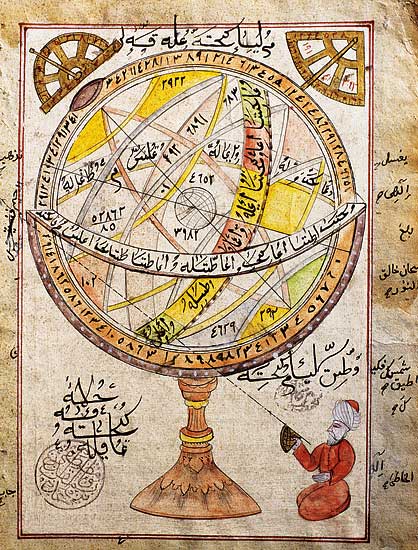
Ninth Century Philosophers and Scientists
Abu Yūsuf Yaʻqūb ibn ʼIsḥāq aṣ-Ṣabbāḥ al-Kindī, in Latin, Alkindus (c. 801 – 873), is an epitomic example of Arab Muslim thought in this period. Known both as the “father of Arab philosophy” and the “philosopher of the Caliphate,” Al-kindi exemplified the Arab Hellenistic philosopher and translator from Greek to Arabic. He was also a theologian, a chemist, an astronomer, mathematician, cryptographer, physician and musician. He was influential in bringing the use of Indian numerals to the Near East and the West. Al-kindi was firmly opposed to alchemy as a fraudulent attempt to transmute base metals into gold.
Al-kindi’s genius was largely overshadowed by the fame of Abū Naṣr Muḥammad ibn Muḥammad Al Fārābī (c. 872 – 951), known in Europe by his Latinized name, Alpharabius. Al-Farabi was likely a Persian, and he is known to have travelled over the Near East and possibly Egypt. He authored works on philosophy, mathematics, music, logic, language, physics, medicine, psychology, and politics. Al-Farabi was also an alchemist and wrote The Necessity of the Art of the Elixir.
Ibn Wahshiyyah the Nabataean (c. ninth – tenth century), also known as Abū Bakr, was an Iraqi scientist known for his partial translation of Egyptian hieroglyphics. He also wrote on the topics of alchemy, cryptography, agriculture, medicine, physics, toxicology, astrology and magic.
Muhammad ibn Zakariya Razi (865 – 925), known as Rhazes or Rasis, another great Persian chemist and physician, wrote a vast number of philosophical and alchemical works, including the Book of Secrets or Secret of Secrets. He was a worldly polymath, familiar with both early Greek Neo-Platonism and some Chinese alchemy, and he figured largely in the period known as the Islamic Golden Age.
The Secret of Secrets described the best practical chemistry of the time, from a long list of laboratory paraphernalia, to classifications of chemicals and minerals, to details of formulae and procedures. He listed the hearth, athanor (alchemical furnace), crucible, bellows, cauldron, beaker, flask, phial, filter, funnel, alembic (still), water bath, hammer, shears, tongs, scissors, pestle and mortar, and other utensils and equipment used in the chemical laboratory for centuries to come.
Rasis identified a number of chemical processes, including evaporation, solution, calcination, crystallization, filtration, distillation, and sublimation. Many of his techniques, such as the creation of certain acids, informed European alchemy and science into the nineteenth century. He also introduced salt to the traditional alchemical duality of mercury and sulfur, thus becoming the first to define the three symbolic cosmic substances, the tria prima, as mercury, sulfur, and salt. Paracelsus later revived the scheme in Europe.
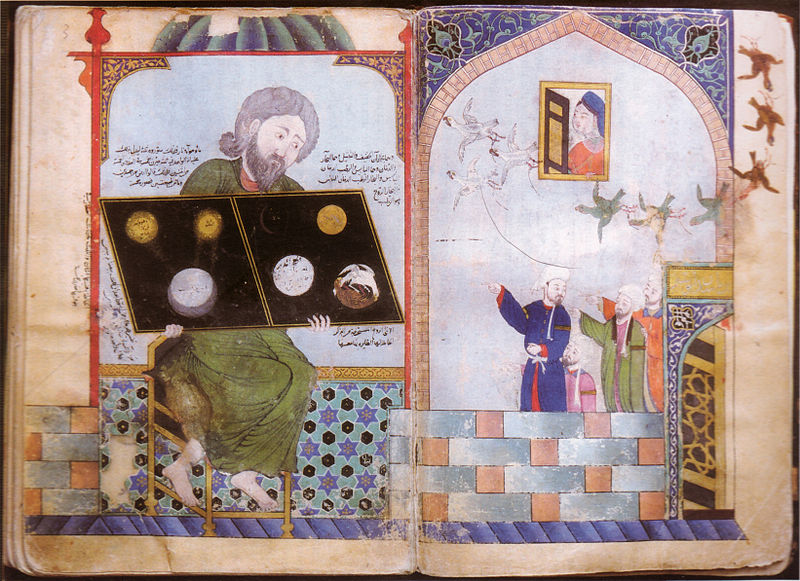
Muhammed ibn Umail al-Tamîmî, or Ibn Umayl, also known as Senior Zadith (c. 900–960) was a reclusive alchemist about whom little is known. He was probably an Andalusian Arab who migrated to Egypt. Senior Zadith denounced spiritually neutral operative alchemy and wrote Book of the Explanation of the Symbols, promoting symbolic alchemy. Geoffery Chaucer knew his name by reputation and Carl Gustav Jung respected his alchemical works.
Maslama al-Majriti or Abu al-Qasim al-Qurtubi al-Majriti, known by the Latin name Methilem (c. 950 – 1007) was an Andalusian Muslim mathematician, alchemist, chemist and astronomer. Maslama al-Majriti wrote about alchemical recipes and the purification of metals. In the Rutbat al-Hakim, “Rank of the Sage,” he described the education of the alchemist in mathematics and natural philosophy. He also left instructions on the purification of silver and gold.
Maslama al-Majriti was the first to describe the conservation of mass in his early experiments with mercury oxide. If tradition is correct, he also explored astrology, talismans, magic and prophesy in the Ghāyat al-Ḥakīm, or the Goal of the Wise, known as the Picatrix. Rabalais makes mention of the name of the book in Gargantua and Pantagruel Book Three, Chapter Twenty-three.
Avicenna
Ibn Sīnā or Abu Ali Sina, best known as Avicenna (c. 980 – 1037), is generally regarded as one of the most brilliant thinkers of the Islamic Golden Age. A Persian physician and astronomer, Avicenna attempted to harmonize Islamic theology with reason and science. He made the futile error of attempting to prove the existence of a monotheistic Creator deity through rational thinking (as no material evidence exists), rather than relying on unquestioning faith, alone.
Avicenna wrote over four hundred treatises, many of which are still extant. His primary works include The Book of Healing, an encyclopedia of metaphysics, mathematics, logic and natural science, intended to heal the ignorance of the soul; and The Canon of Medicine, a medical encyclopedia outlining the uses of minerals, vegetables and animals in medicine, a work that endured as a university textbook through the Middle Ages and the Renaissance.
The Liber Primus Naturalium was Avicenna’s exposition on the natural causes of medical disorders, written at a time when diseases were often believed to have spiritual or magical origins. Avicenna wrote against astrology as divination, and made a distinction between astrology and the mathematics-based science of astronomy.
Avicenna was the inventor of the first steam distillation apparatus and produced essential oils, which today makes him an early pioneer of aromatherapy. As an alchemist, he rejected the notion of transmutation. Latin translators attributed four books on alchemy to Avicenna, but only two are likely to have been written by him: the Epistola de re recta and The Book of Minerals, which classified minerals into stones, salts (substances that are water-soluble), sulphurs (substances that burn) and metal ores (substances that melt).
Avicenna travelled around the Near East, likely studying in the major libraries of the age, engaging in sophisticated discussions and debates with the intelligencia of various disciplines. His influence spread in time and space to the likes of William of Auvergne, Bishop of Paris, Albertus Magnus and Thomas Aquinas. He is remembered as one of the greatest Islamic philosophers of all time.
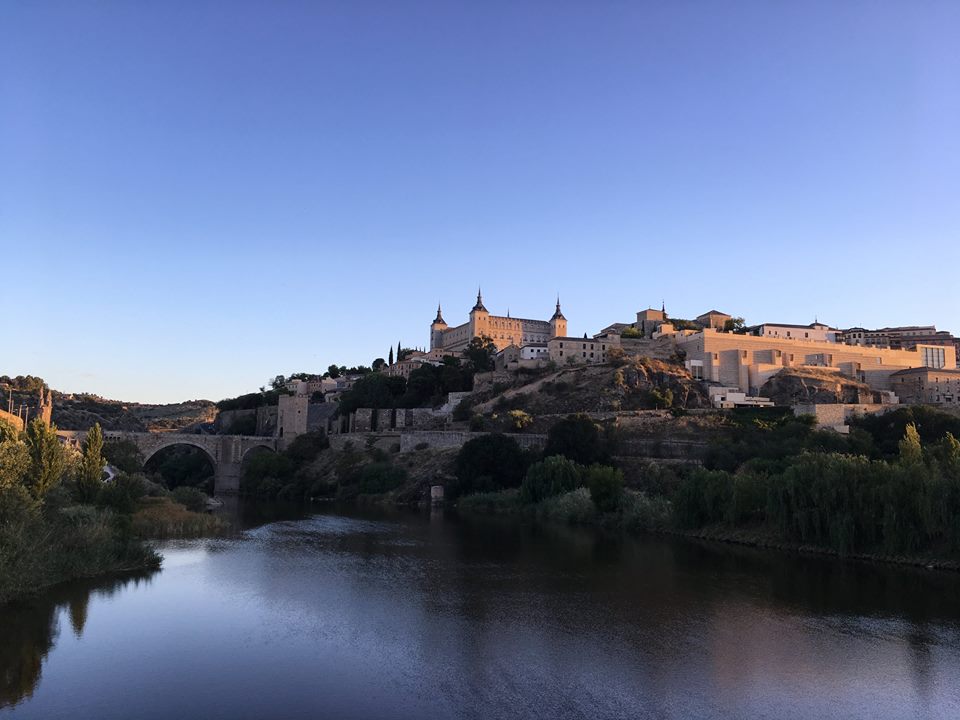
Tenth Century
Ali Ibn al-Husain Ibn al-Wafid (c. 997 – 1074), known as Abenguefit, was the vizier of Al-Mamun, the Muslim Berber (North African) king in Toledo, Spain. A notable agronomist, botanist, physician and pharmacologist, Ibn Wafid built a botanical garden for his king and left writings on agronomy that influenced Europeans during the Renaissance. He also left several books on medicine and pharmacology.
While as a physician, Ibn Wafid preferred preventative health methods especially through good diet, his Kitāb al-adwiya al-mufrada, or Book of the Simple Medicines, offered simple rather than compound prescriptions for therapeutic purposes. Alchemical techniques allowed Ibn Wafid to obtain over five hundred medicines from vegetable sources.
Abū Rayḥān Muḥammad ibn Aḥmad Al-Bīrūnī (973 – 1048), known as Al-Biruni was a Persian polymath who served under several princes during a tumultuous and violent period. He was a mathematician, astronomer, historian and linguist and is known for his studies of India’s culture and sciences.
Biruni was deeply interested in the history of religion and studied comparative religion, investigating the three Abrahamic religions, Zoroastrianism, Hinduism, Buddhism and others. He considered anthropomorphic deities for the lower classes and a more abstract monotheistic god for the educated.
Biruni wrote extensive encyclopedias on India, ancient cultures, astronomy, the mathematics of astrology and geography. He also wrote on many subjects, such as a book on precious metals, gems and diamonds, a treatise on astrolabes, and dozens of works on mathematics and astronomy. Biruni is best known for his comprehensive materia medica, the Kitab al-saydala fi al-tibb, or Book on the Pharmacopoeia of Medicine.
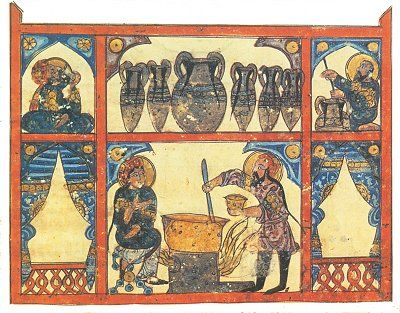
Eleventh and Twelfth Centuries
Abū Ḥāmid Muḥammad ibn Muḥammad al-Ghazālī, or Al-Ghazali, known to medieval Europeans as Algazelus or Algazel (1058 – 1111), was a Persian jurist, philosopher, theologian and mystic. He is widely considered to be the most influential Muslim after the founder Mohammad. He brought together orthodox Islam, Sufism and neo-platonism, writing seventy works on these topics and the sciences, with a total of four hundred books later attributed to him.
Al-Ghazali’s Ihya’ Ulum al-Din or Ihya’u Ulumiddin, or Revival of Religious Sciences, also known as Kimiya-yi Sa’adat, or The Alchemy of Happiness, is a work of Islamic theology and philosophy, the term “alchemy” being utilized figuratively to represent monotheistic spiritual growth.
Several alchemical works are attributed to a mysterious, probably legendary figure by the name of Artephius, or Artefius (c. 1150). By tradition, since the Renaissance, Artephius was a first or second century Arab who lived a thousand years due to consumption of an alchemical elixir of longevity.
Roger Bacon held in high esteem The Secret Book of Artephius, an alchemical text allegedly written by Artephius. He is also meant to have written the Tractate de vita propaganda, or Tractate of the Prolongation of Life. In early seventeenth century Paris a book called Artefii clavis majoris sapientiae, “Book of the Key of Great Wisdom,” was printed under the name of Artephius.
Abu al-Hakim Muhammad ibn Abd al-Malik al-Salihi al-Khwarizmi al-Khati (c. 1034) was a Persian Muslim who lived in Baghdad. He was an alchemist known for his book, Ain al-San’a wa awn al-Sunâ, or The Essentials of the Art and the Help for the Artisans, a manual for metallurgists, craftsmen and artisans. Ahmad ibn Imad ad-Din, an eleventh century Persian physician, authored the Fi sina‘at al-iksir, or On the Art of the Elixir, an alchemical treatise on chemical reactions.
Mu’ayyad al-Din Abu Isma‘il al-Husayn ibn Ali al-Tughra’i (1061 – c. 1121) was a Persian poet, astrologer and alchemist, as well as a senior official under the sultan and his vizier. His Mafatih al-rahmah wa-masabih al-hikmah, or The Lamps and the Keys, reviewed the work of former alchemists. His Kitab Haqa’iq al-istishhad, or Book of the Truth of Evidence in Alchemy, defended alchemical esotericism against the arguments of Avicenna. (See Roshdi Rashed, Encyclopedia of the History of Arabic Science Volume 3: Alchemy, Technology and Life Sciences, Routledge, London, England, 1996, p. 873.)
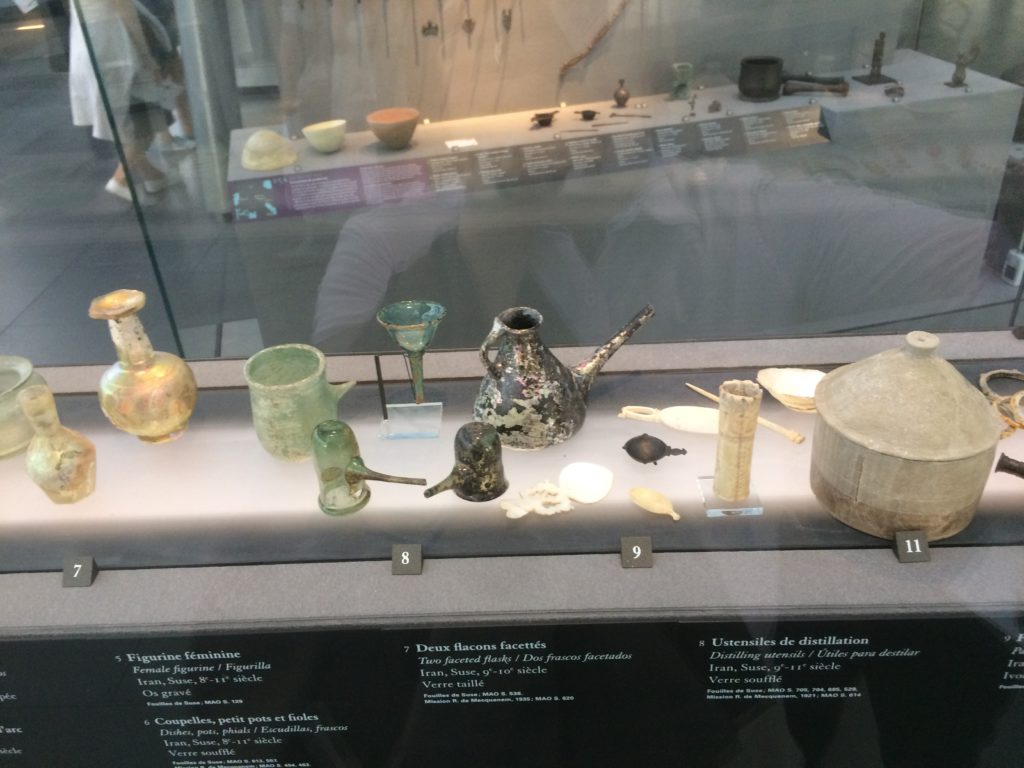
Abū al-Ṣalt Umayya ibn ʿAbd al-ʿAzīz ibn Abī al-Ṣalt al-Dānī al-Andalusī (c. 1068 – 1134), known by his Latin name Albuzale, was a Muslim academic, scientist and physician from Andalusia. Abu al-Salt gained fame over Iberia and southern France as an expert on the quadrivium (arithmetic, geometry, music and astronomy; along with the trivium of grammar, logic and rhetoric, these subjects formed the seven liberal arts).
Besides writing a famous treatise on astronomic technology and another on the quadrivium, Abu al-Salt also published works on philosophy, history, medicinal plants and alchemy. His alchemical research focused on finding the elixir that would transmute base metals copper and tin into the noble metals silver and gold.
Muḥyiddin ibn Arabi, or Abū ʿAbd Allāh Muḥammad ibn ʿAlī ibn Muḥammad ibnʿArabī al-Ḥātimī aṭ-Ṭāʾī (1165 – 1240), also known as Shaykh Al-Akbar, “the master of masters,” mentioned above, was born in Murcia and raised in Seville, Spain. He lived in Mecca after making his pilgrimage there and then travelled throughout the Near East and Egypt. He is known to have authored over one hundred books and about eight hundred titles have been attributed to him.
Shaykh Al-Akbar’s Mawâqi’ al-Nujûm, “The Settings of the Stars,” describes red sulphur and the supreme elixir as the illumination of the perfected human, the enlightened sage. Red sulphur, another term for the Philosopher’s Stone, transmutes silver into gold, an allegory for the transformation of the alchemist into his pure, original state.[1]
Abu’l Hasan ibn Arfa Ra’a, or Ibn Arfa Ra’a (d. 1197) was a Spanish Muslim chemist famed for his Shudhur al-dahab, “The Gold Particle,” a poem of 1460 verses in the tradition of symbolic alchemy. His mythological history had Hermes in charge of mining in ancient China; an Indian Ares whom he thought might be Horus living in China; and a Chinese explorer discovering the home of the Biblical first man Adam. (See Joseph Needham, Science in Traditional China: A Comparative Perspective, Chinese University Press, Hong Kong, 1981, p. 71.)
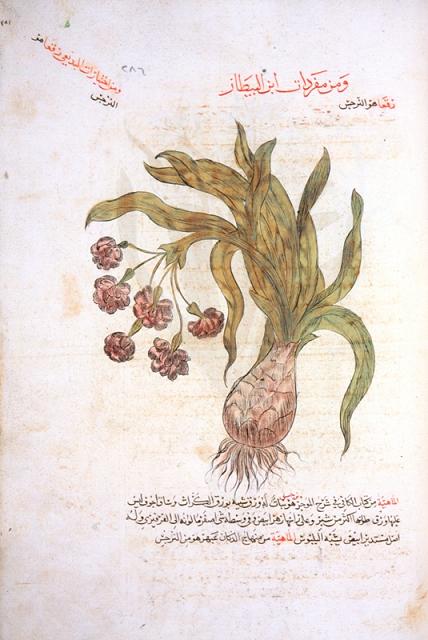
Süleymaniye Library, Hagia Sophia Museum, Istanbul, Turkey, Coll., MS 3748.
Thirteenth and Fourteenth Centuries
Ahmad bin Muhammad bin Mufarraj bin Ani al-Khalil (c. 1200), known as Abu al-Abbas al-Nabati (the Botonist), an Andalusian Muslim theologian and scientist, was accomplished in both botony and pharmacology. He wrote against dishonesty, exaggeration and heresay, promoting the application of experimentation and direct observation especially to botony and pharmacology. He passed along this discipline of scientific method to his student Ibn al-Bayṭār.
Ḍiyāʾ Al-Dīn Abū Muḥammad ʿAbdllāh Ibn Aḥmad al-Mālaqī, known as Ibn al-Bayṭār (1197–1248) is regarded as the epitomic Muslim botonist. He was an Andalusian scientist adept in the fields of botony, pharmacology and medicine. He also produced essential oils. He travelled around North Africa and the Near East, and was Chief Herbalist in Cairo, Egypt at one point.
Ibn al-Baytar collected plants with his teacher, Abu al-Abbas al-Nabati, categorizing hundreds of new plants discovered by Muslims, along with the thousand known previously. He then composed the Compendium on Foods and Simple Remedies, an encyclopedia of hundreds of vegetable foods and drugs.
Izz al-Din Aydamir al-Jaldaki, or Jaldaki Khorasani, or al-Jildaki (died mid-fourteenth century) was a Persian alchemist and scientist from the town of Jaldak, who fled his native Khorasan, the cultural center of Persia, to escape the Mongol invasion. He settled in Damascus and then Cairo.
Al-Jildaki admired an alchemist from Baghdad named Abu al-Qasim Ahmad ibn Muhammad al-Iraqi al-Simāwi (died c. 1260), author of Kitab al-lm al-muktasab fi zirat al-dhahab, or The Book of Acquired Knowledge concerning the Cultivation of Gold.
Al-Jaldaki was both accomplished scientist and symbolic alchemist. He authored the scientific al-Misbah fi Ilm al-Miftah, or Key of the Sciences of Lights and the Kitab al-Burhan fi asrar ‘ilm al-mizan, translated as The Proof Regarding the Secrets of the Science of the Balance, a useful classification of minerals, vegetables and animals with an underlying mystical and speculative alchemical philosophy. One of the final alchemical works of the Islamic Golden Age, this composition remained popular through the nineteenth century.
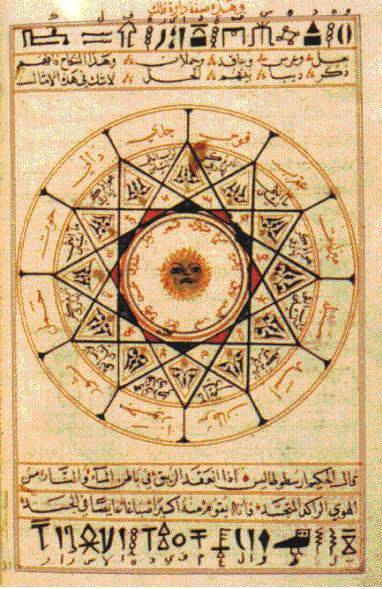
Abū Zayd ‘Abd ar-Raḥmān ibn Muḥammad ibn Khaldūn al-Ḥaḍramī (1332 – 1406) was an Arab historiographer and historian who made a record of much of the scientific and alchemical knowledge of his time. The Muqaddimah of Ibn Khaldun or Ibn Khaldun’s Prolegomena, a book of world history and historiography, including observations in chemistry, biology, sociology, economics, politics and theology, intended as the opening chapters of a future manuscript, the Kitābu l-ʻibar, or Book of Lessons.
Ibn Khaldun was a skeptical historian who condemned superstitious or credulous acceptance of claims made about historical events or other facts. In the Fī ʿilm al-kimya, his history of alchemy, he discussed the theories of skilled alchemists like Jabir ibn Hayyan (Geber), al-Farabi, Avicenna and al-Tughrai.
He expounded on the transmutation of metals and the elixir of life, opining that most alchemists are sincere but misguided, as none has ever shown any evidence that transmutation is possible. Alchemists waste their lives attempting the impossible, destroying their reputations, and may even resort to committing the sinful act of fraud.
Golden Wisdom
Muslim alchemists and their critics covered the whole spectrum of views and interests surrounding the extraordinary world of the Royal Art. This Islamic culture of investigation and learning, ignored by the West, carried on the work of the Classical philosophers, the Neo-Platonists and the early alchemists.
In the eighth century the Arabs had invaded and conquered the Iberian Peninsula; modern Spain and Portugal, in Latin known as Hispania, and called Al-Andalus by the Muslims. Charles Martel repulsed the Islamic armies in France in the ninth century. It was at this time that alchemy and other Mediterranean “pagan” learning was introduced to Western Europe, but it was several centuries before Christian Europeans made translations of important works and found an interest in the ancient wisdom.
For a more detailed description of Arabic alchemy
The Turks attacked and captured territory of the Byzantine Empire in the eleventh century, causing retaliation from the first Western European Crusaders in Nicea, the capital of Anatolia (Turkey), Antioch in Syria and Jerusalem.
Mongols from the steppes of central northern Asia were a polytheistic and warlike people, who under Ghengis Khan in the thirteenth century invaded as much of Asia as they could, slaughtering millions in their path. The Mongols took Baghdad and Syria, but were stopped at Palestine with the help of the Egyptian sultan, sparing the cities of Mecca, Medina and Jerusalem.
As Turks and Mongols made successful invasions and campaigns against the Islamic world, the caliphate was abolished, so the Islamic golden age of scientific and philosophical ascendency came to an end. Western Europe took up the torch of enlightenment.
University of Delaware’s Special Collections; Islamic Alchemy
